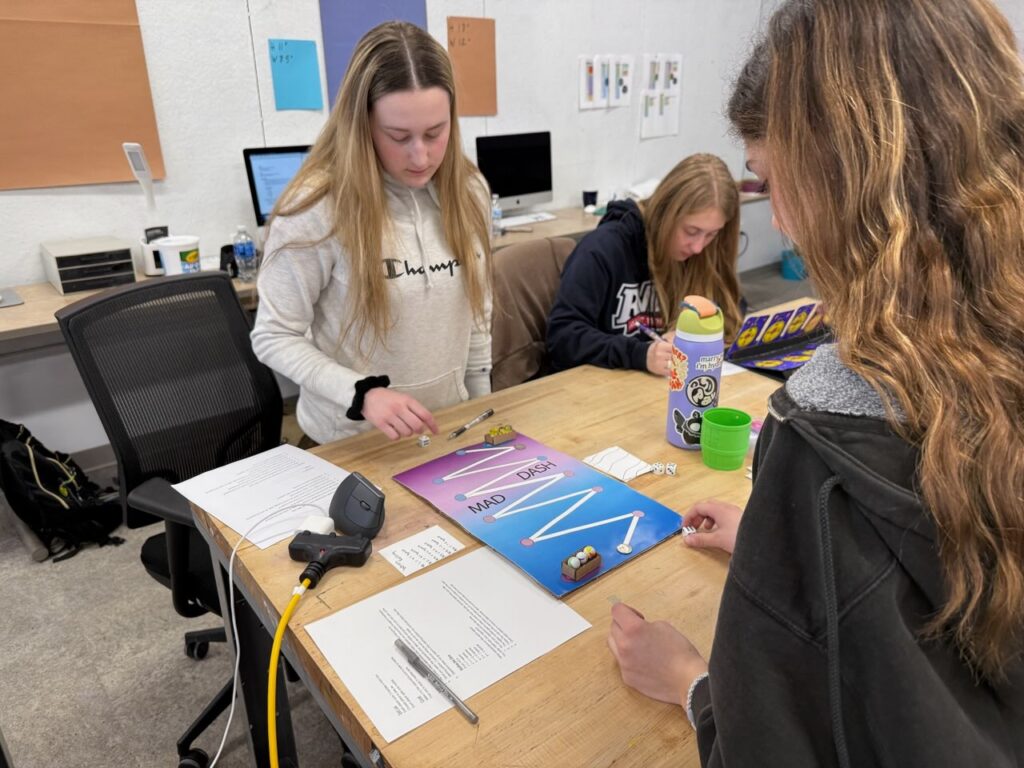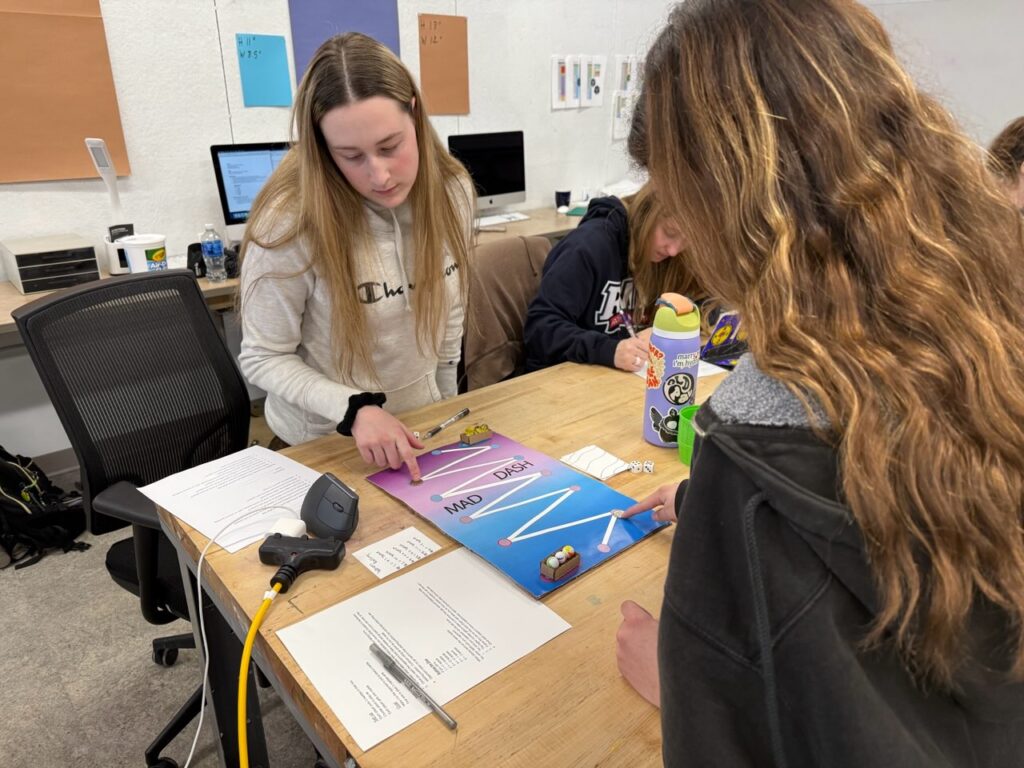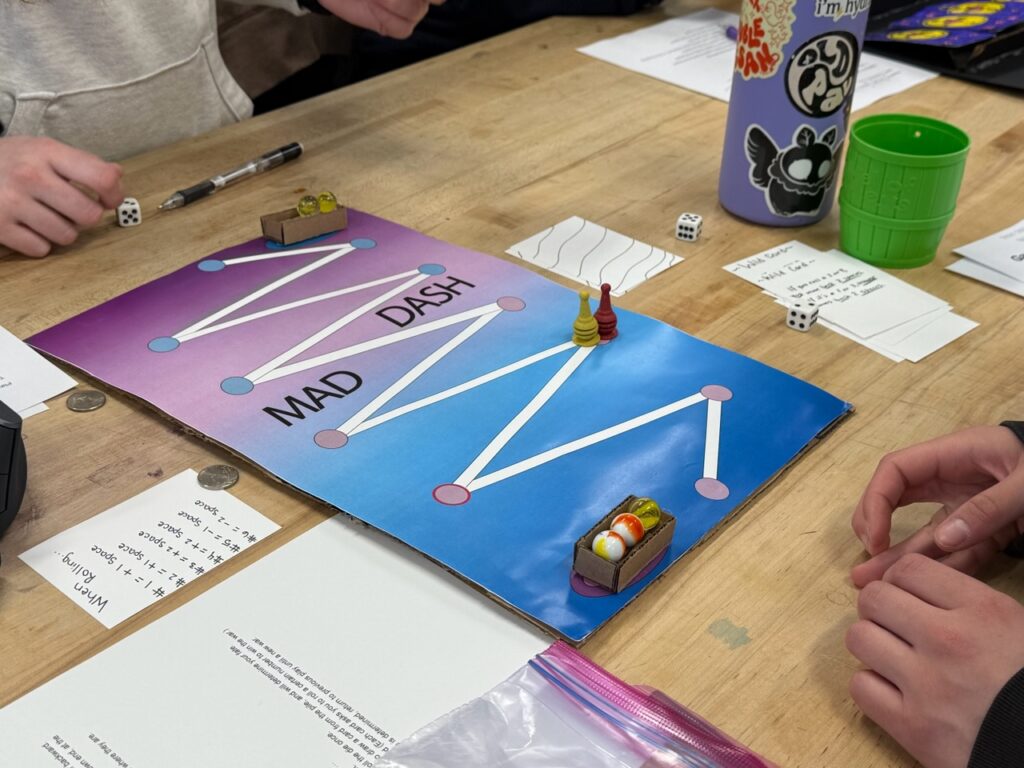
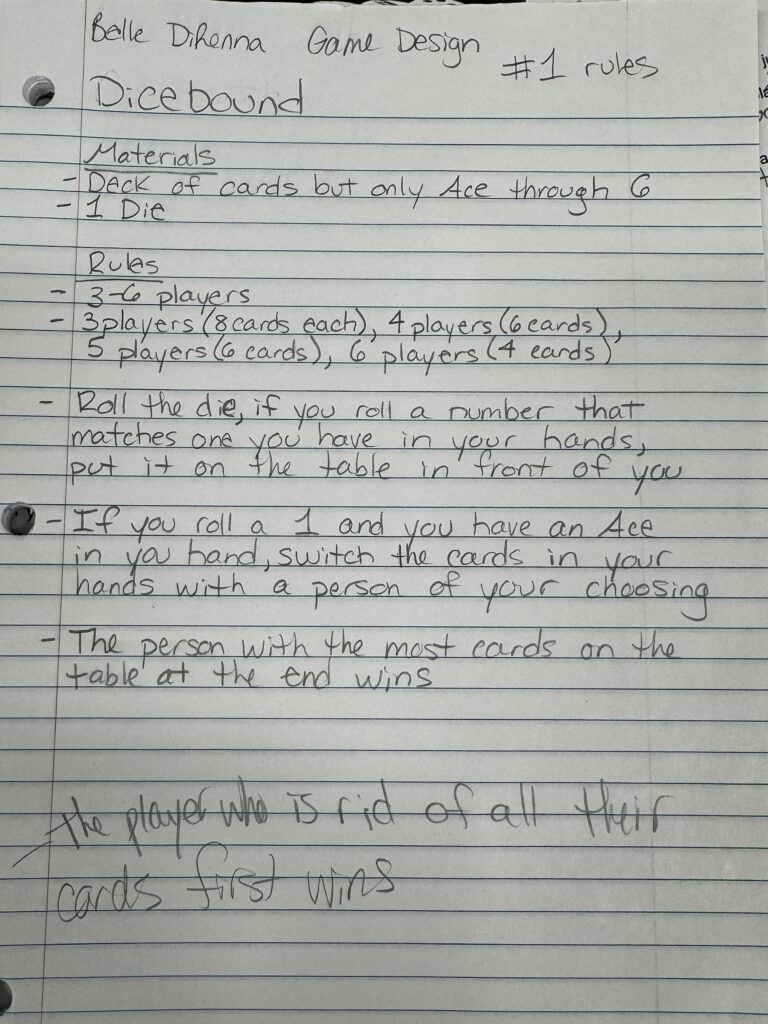
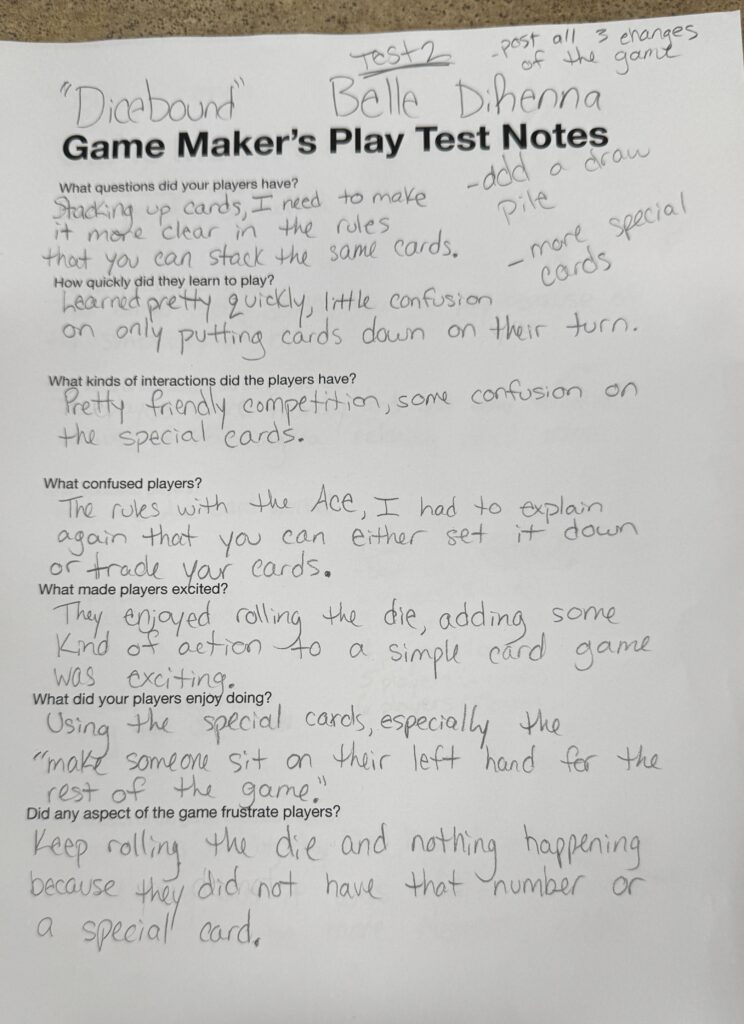

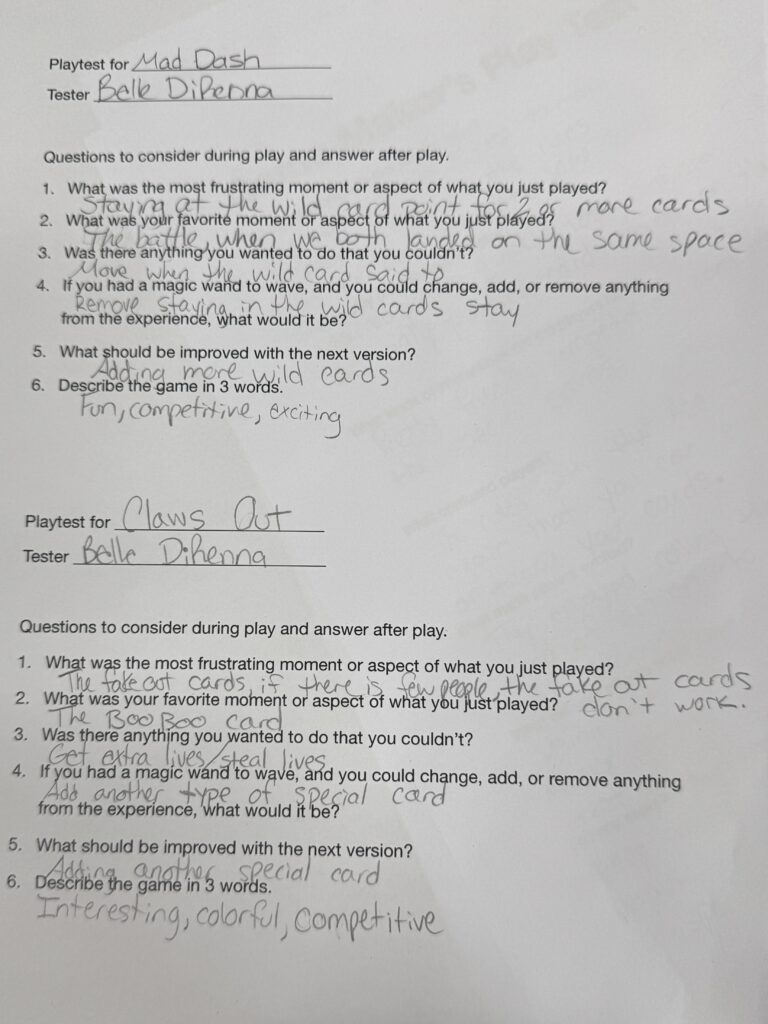
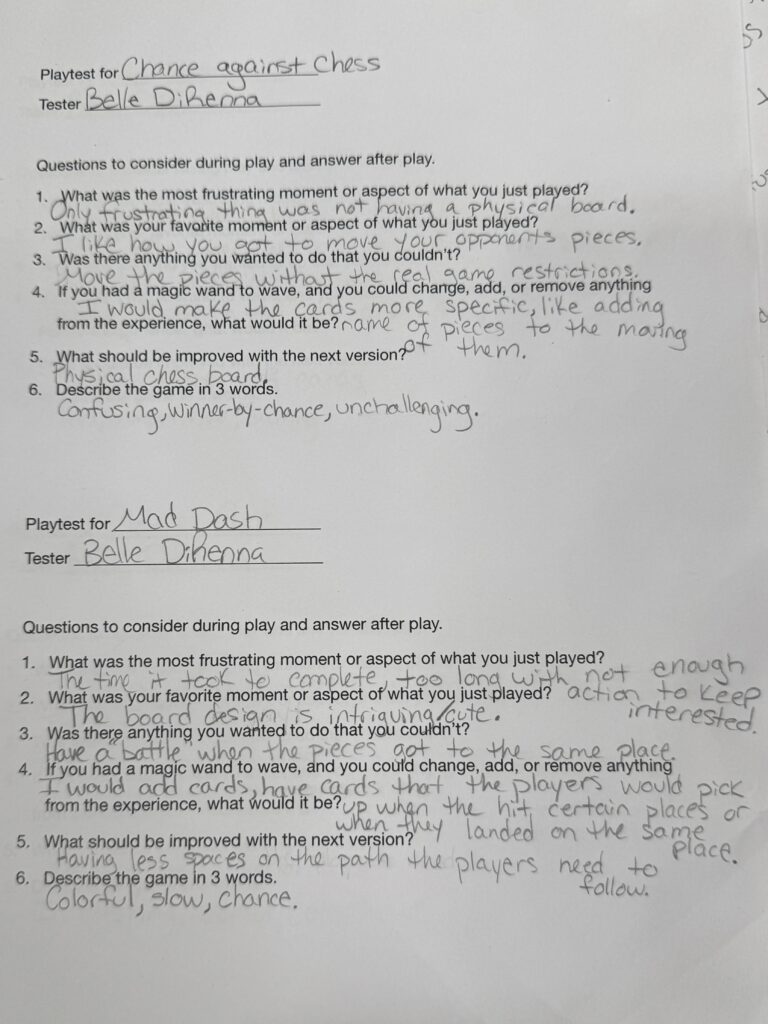
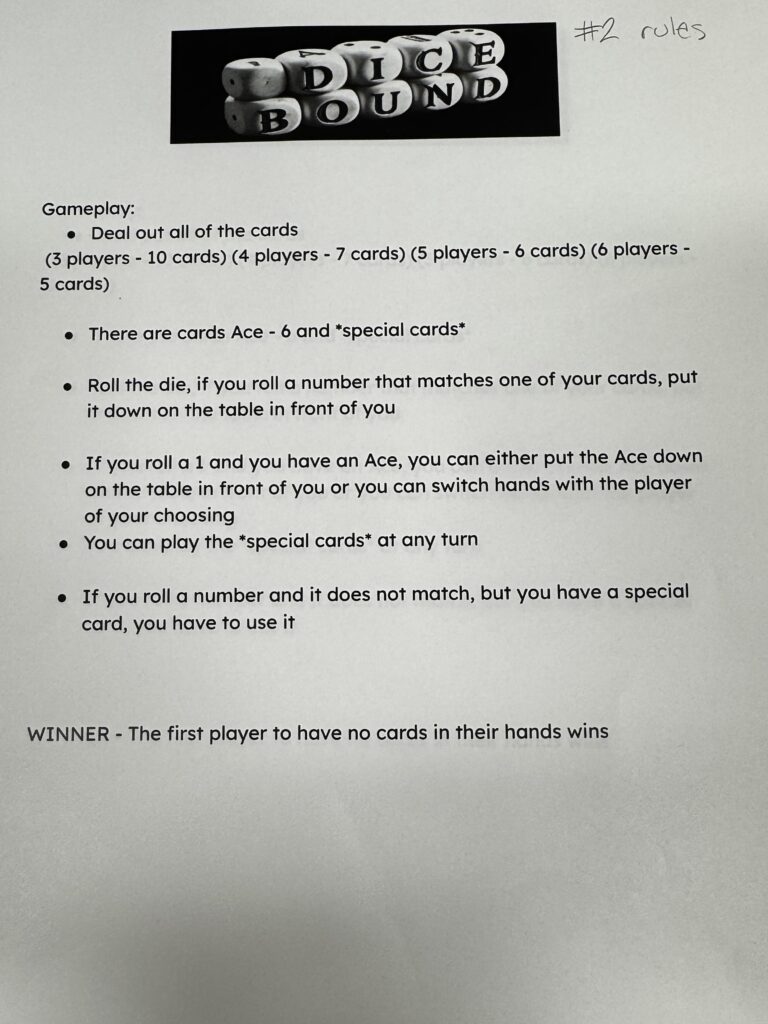
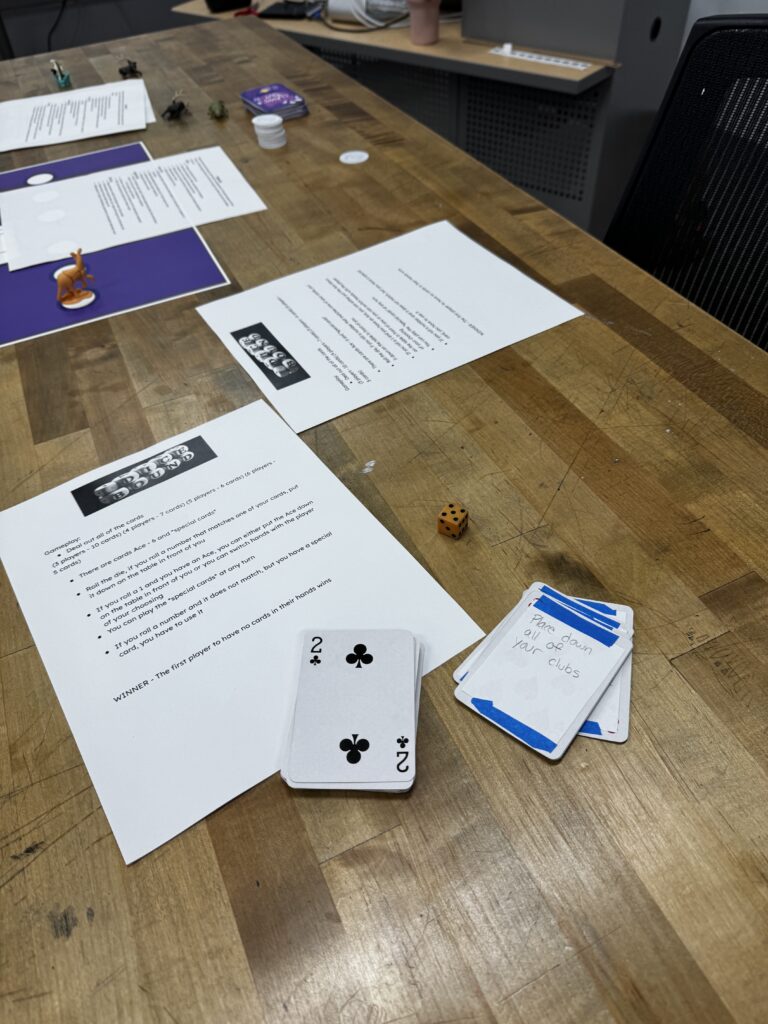

design courses, syllabi, schedules, resources and policies
Pokemon 4D Studio Version
Use 40 cards in a deck.
Flip a coin to see who goes first.
Whoever goes first cannot attack during their first turn.
Draw 4 cards and place them facedown in front of your deck. These would be considered your prize cards. When you knock out your opponent’s Pokémon, draw a prize card. When you draw all 4 before your opponent does, you win. You also win if your opponent has no remaining pokemon on the field.
The game continues even if a player’s deck runs out of cards.
Both players draw 7 cards at the beginning of the game. If you don’t have at least 1 pokemon in your hand to play on the playing field, shuffle your hand into your deck and draw 7 new cards. Repeat until you are able to play at least 1 pokemon.
*Optional (You also have the option to reshuffle if you only have 1 pokemon in your hand and do not wish to play it down.)
Each player draws one card at the beginning of their turn.
Each player can only have one attacking Pokémon and a maximum of five on the bench.
Each player can play as many Pokémon on their bench up to the 5-bench maximum.
For this game, disregard the energy costs and effects such as burned, poisoned, paralyzed and asleep.
Each player can only attack once per turn and if the damage counters total or exceeds the HP of the Pokémon, the Pokémon would be knocked out and placed in the discard pile.
Trainer cards can only be played during the player’s turn. And a player can play as many as they have in their hand. Once played, the trainer card is discarded.
Stadium cards are placed on the field separately and any player can replace them with another stadium card.
Pokémon powers can only be used once per game per Pokémon.
Evolution cards are placed on top of the pokemon they correspond with (the card will say “evolves from X”)
During attacking, choose the attack and if the attack does damage place the damage counters on the defending Pokémon and the other appropriate Pokémon if applicable. Once you attacked, your turn is over.
You can have an unlimited number of cards in your hand.
You are allowed to retreat your attacking pokemon and switch it with one of your benched pokemon, this is allowed only once during your turn. And this is done before your attack.

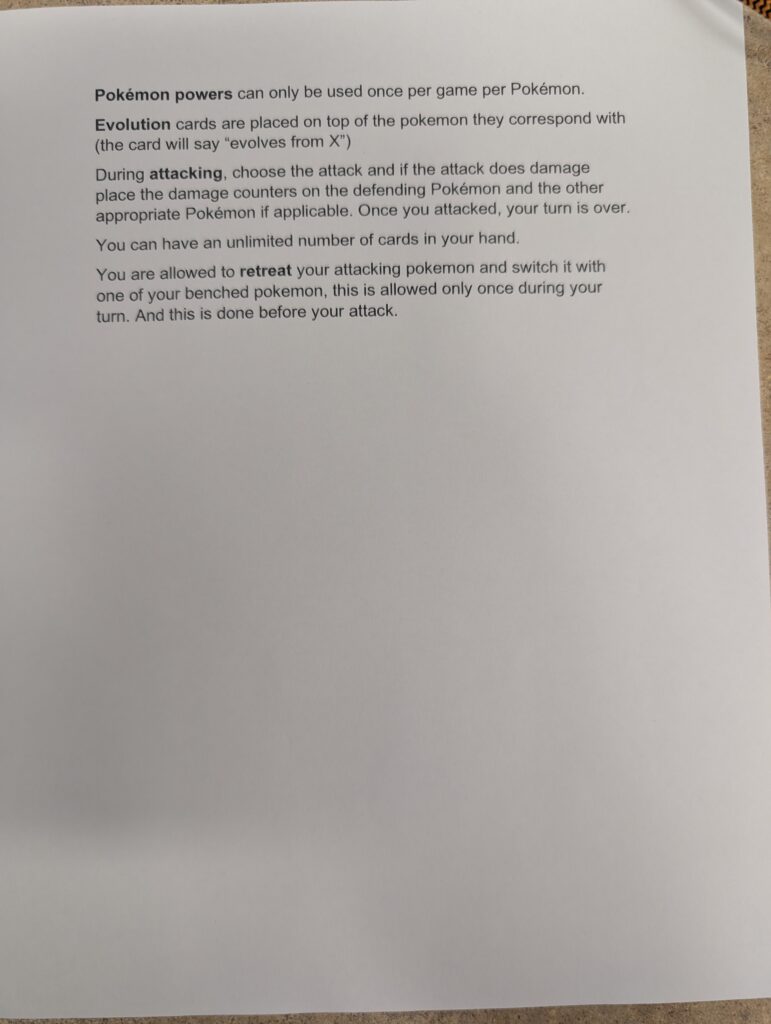
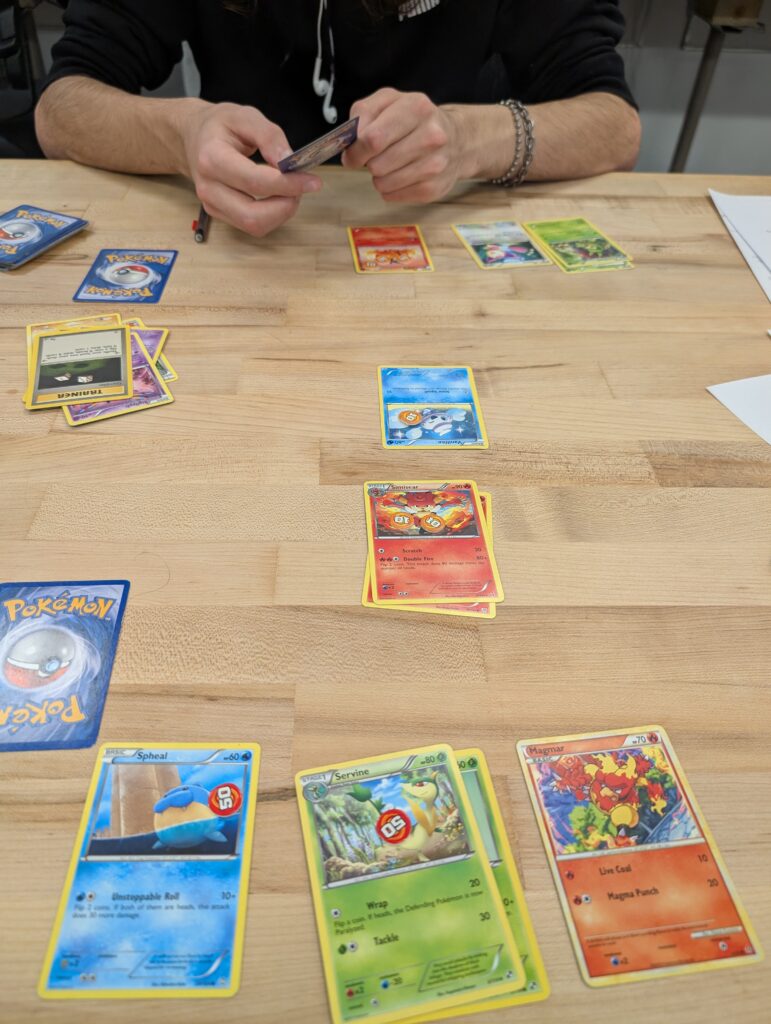
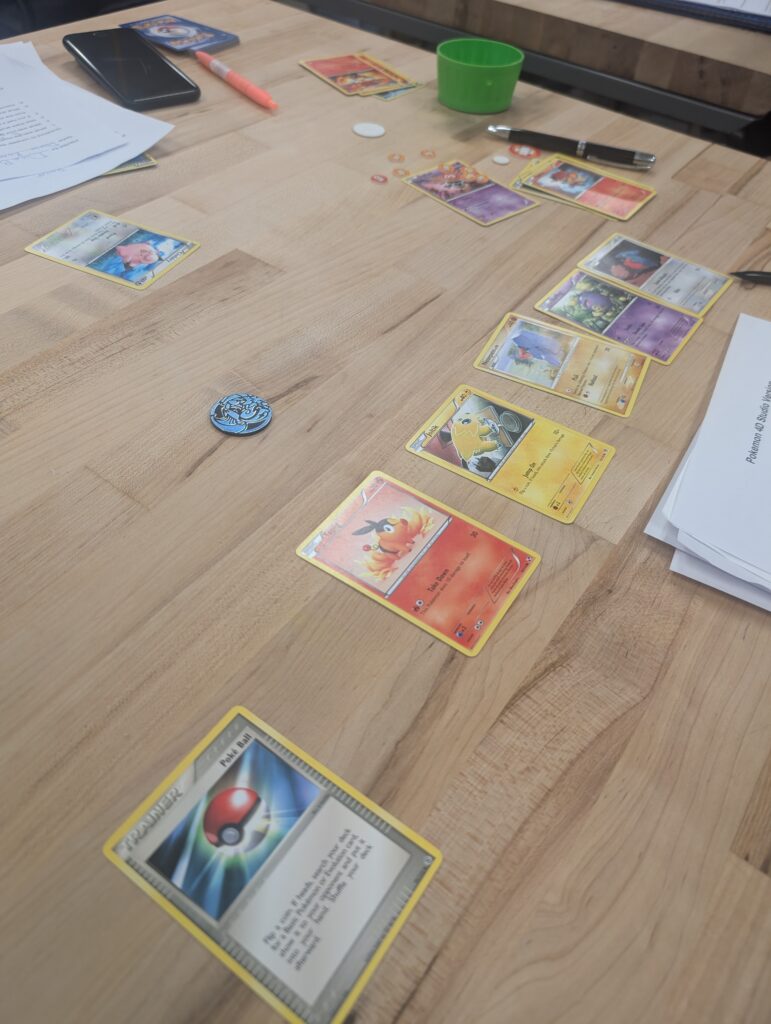
Play Test Notes
I feel that the experience the other student had with this version of the game seemed more technical than the other games within the classroom. The trainer cards had a wide range of impact and can change the experience of the gameplay very quickly. Some students picked up on the rules more quickly than others.
This version of the game seem to have had a positive engagement for the students that tested this game.
First version:
This game is a card game that was originally called Animal Pickup which had player’s pick-up abilities and have a chance of getting animal cards. Once you get all of your colored animal cards then the player win.
I realized I needed way more ability cards with different uses, less animal cards, and a way to get different colored animals out of a player’s hand
Second version:
I change the name to Critter Picker and change the goal to have 2 sets of colored cards to win (instead of specific-colored cards). I’ve also added abilities to animal cards that only activate if the player has the specific color. Additionally, I made it so there’s an animal pile and an ability pile instead of it being intermingled.
I realized I need a better way of showing the animal pile vs the ability pile as well as adding or lessening some ability cards. I’ve also realized having 2 sets of colored cards may be a bit much especially for 2 players. Additionally, I need balance some card abilities and have clearer instructions (especially on the cards)
Created by Mason Tosadori, Aleah Dudek, and Maria Wack
First Attempt : In our first attempt of our game, we wanted to replicate the game spoons, but add action cards to the game to make it more competitive and fun. What we did, was grabbed a deck of cards and used sticky notes to replicate the action card ideas that we had. We took the feedback from our testers of getting rid of the life cards to make the game more challenging and added wild cards to make it more likely for players to get a match. It seemed like everyone was having a good time while playing the game and we listened to their frustrations and focused on eliminating them.
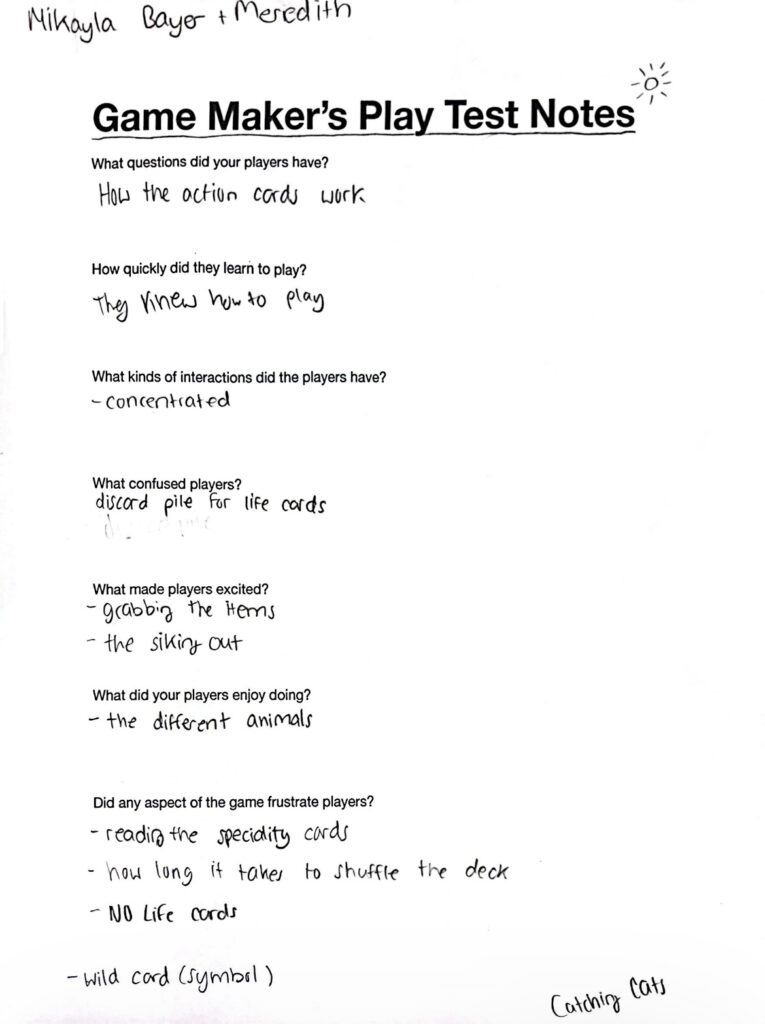
Second Attempt: In our second attempt, we decided to theme the game and go with a cat theme. With each card, we had cat illustrations to make it look aesthetically cute and playful. The action cards, we themed them to match the cat concept to match that idea of a playful feel. We made the cards the same amount as a deck of cards, but without a king, queen, or jack and replaced them with action cards. Once we had the cards made, we made sure to make our directions seem clear and had the players figure it out themselves. We also made a board to keep everything in place and to make sure the players knew where to put their discarded cards and knew where the figurines should go. We had a successful second attempt with a lot of popularity toward our game and some very competitive spirits. We got a lot of compliments, however our biggest critique was to get people to add lives back.
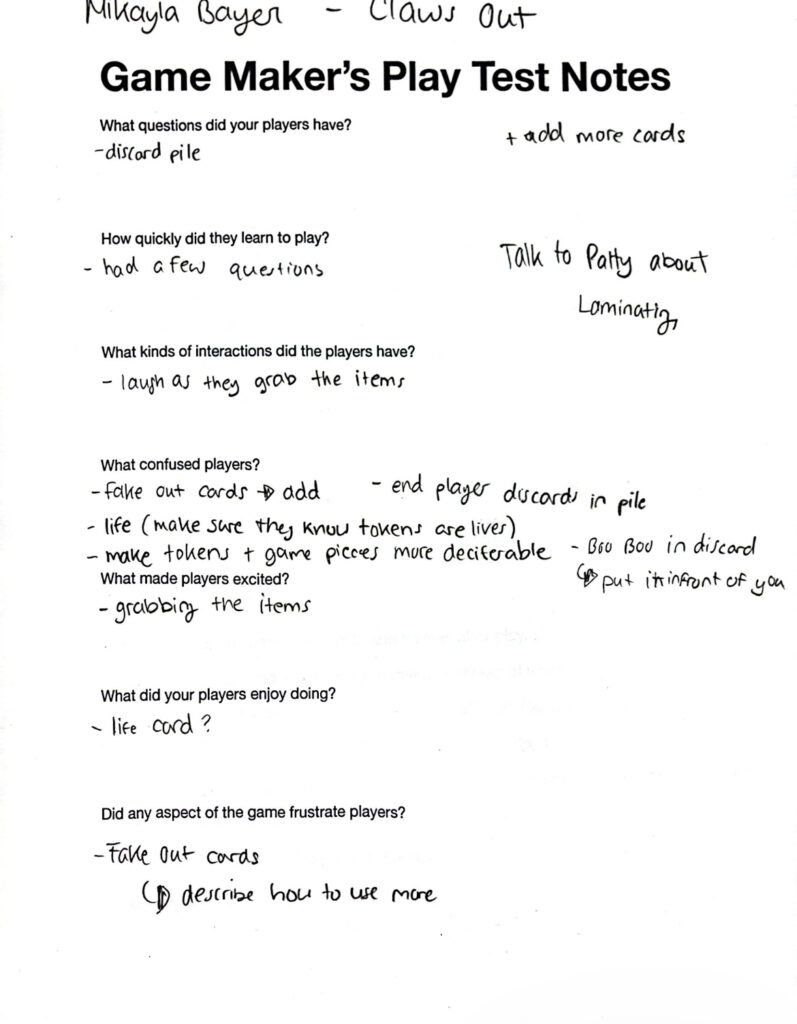
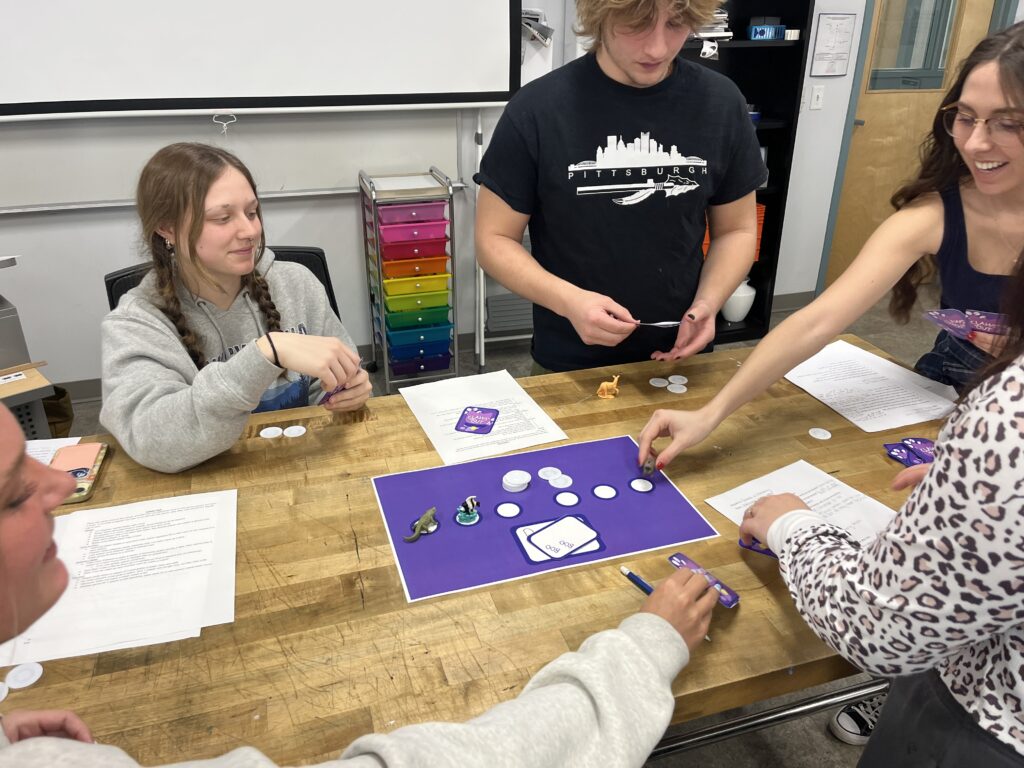
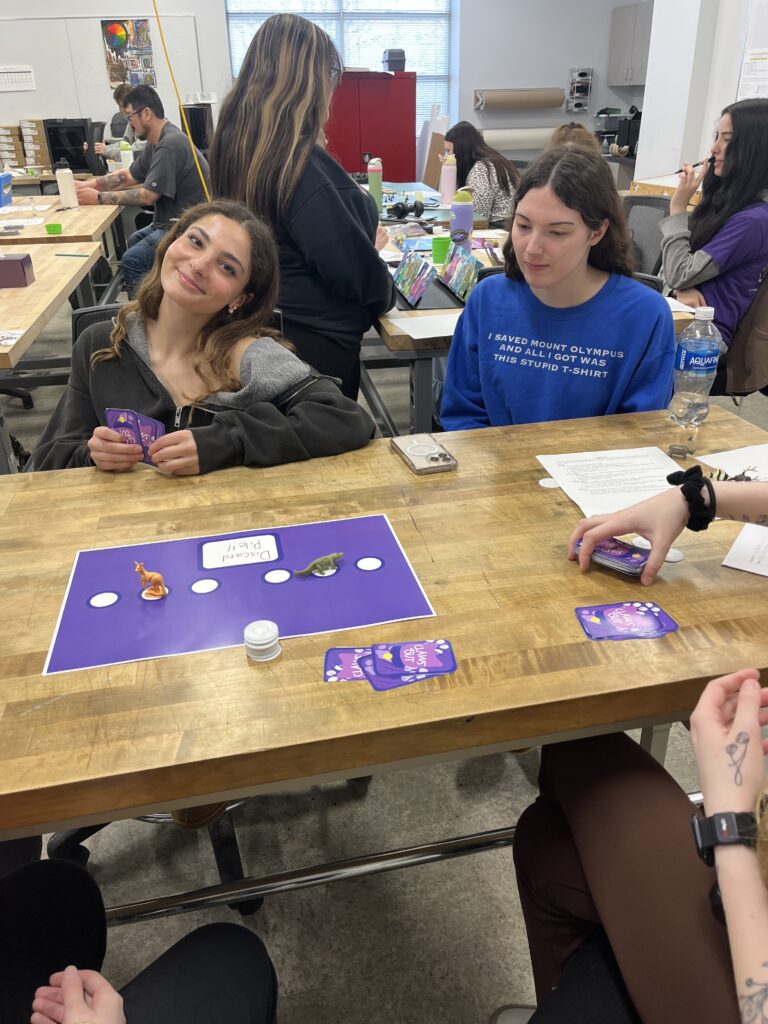
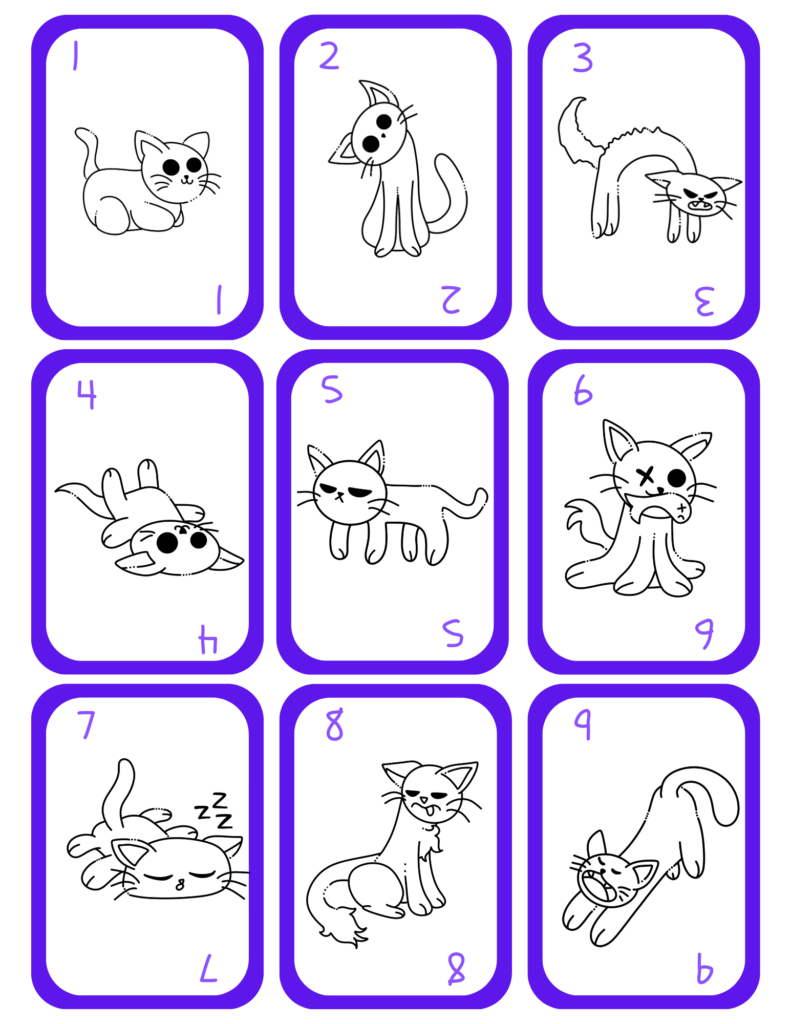
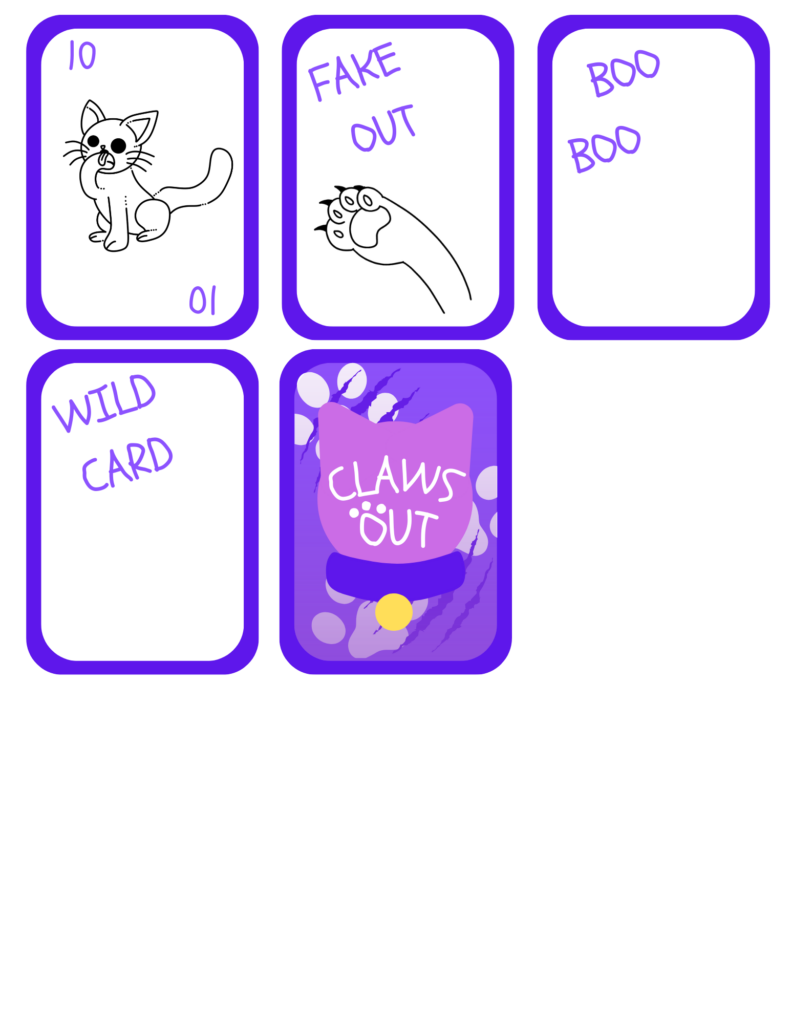
Third Attempt: Our next steps would be to make a sturdy game board with more designs on it as well as to color in the cats. We would also put more illustrations on our action cards and color those in as well. Another idea we had was to make the directions sheet look more fun and cute to make it all aesthetic to our cat theme game. As people were testing our game, we could find little errors here and there, so we would put some of those errors and make them more clear in our instructions. Overall, we are very happy with the turnout of our game and hope to explore and modify it in the future.
Kaley Rohanna and Madison Hurst
Mad Dash
By: Kaley Rohanna and Madison Hurst
Game Board Creation
What is Mad Dash:
A two player game requiring players to roll dice in order to progress their piece across the board. The goal is to get to the opponent’s end and steal all their marbles.
Materials:
4 marbles (2 for each player), 2 marble holders, 2 dice (1 for each player), 9 Wild Cards, 1 Dice Number Key, 2 player pieces, 11×17 cardboard, 11×17 cardstock board design,
Mad Dash Initial Testing:
Mad Dash 2nd Testing:
In this test, we added wildcards to handle the instances where the players’ pieces reached the same space and gave each player only one die to roll.
Instructions for Testing 2:
Set up
Each player puts 3 marbles in their box
Choose piece to play as
Each player gets one marble
Goal
Make it to the opponent’s end to steal a marble
First one to steal 3 marbles wins
Instructions
Rolling the Dice
If you roll a…
1 = +1 space
2 = +1 space
3 = +2 spaces
4 = +2 spaces
5 = -1 space
6 = -2 spaces
When pieces land on the same space…
You enter WAR with your opponent.
What would we fix for the following testing:
